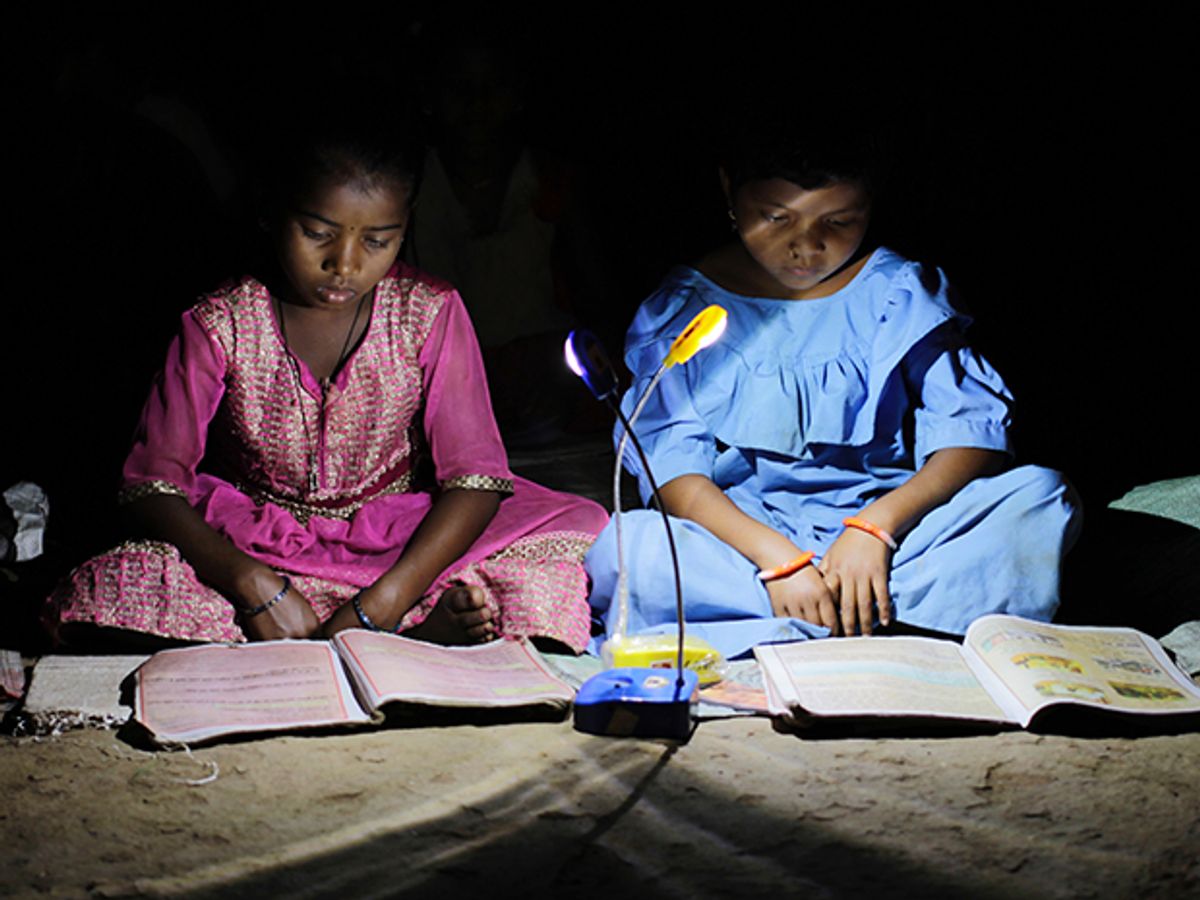For all of the excitement about using solar power to bring electricity to the more than 1 billion rural poor worldwide living without it, big picture trends provide a sobering reality check. In spite of innovative off-grid technology and business plans and high profile initiatives aiming to power remote villages in subsaharan Africa, for example, electrification there is still falling behind population growth. In 2009 there were 585 million people in sub-Saharan Africa without power, and five years later that figure had risen to 632 million, according to the latest International Energy Agency (IEA) statistics.
A first-of-its-kind deep-dive analysis of the flow of capital, released by the United Nation’s Sustainable Energy for All (SEforALL) program today, shows that off-grid systems simply are not getting the support they deserve. “This research shows that only 1 percent of financing for electrification is going into this very promising and dynamic energy solution,” says SEforALL CEO Rachel Kyte, who says the findings are “a wake up call” for the international community.
The 20 countries targeted in SEforALL’s Energizing Finance report account for 80 percent of the estimated 1.06 billion people globally living without electricity—as well as 84 percent of the 3.04 billion people who lack access to clean cooking technology. Energizing Finance found that total investment in electricity infrastructure—be it public or private, international or domestic—averaged $19.4 billion a year in 2013 and 2014 (the latest year with full statistics). Of that, a miniscule $200 million per year was dedicated to off-grid systems.
This is “alarming” the authors write in light of off-grid solar’s “enormous promise to provide basic electricity services quickly and at significantly lower costs.” The IEA estimates that 45 percent of rural electrification is best achieved by solar systems.
Kyte says Energizing Finance casts doubt on the international community’s goals of achieving universal access to electricity and to sustainable cooking fuels by 2030. “The level of finance that is actually flowing to real, time-tested solutions for energy access… is not at the levels nor flowing at the pace which would put us on track to achieve the goals,” she says.
SEforALL's report, a collaboration with research groups and international finance organizations including the African Development Bank and the World Bank, does note a few hopeful recent developments. For example, the World Bank this year committed $150 million towards rural off-grid renewable projects in Kenya, and enterprises installing pay-as-you-go off-grid solar systems raised $223 million last year.
Even those solar enterprises, however, say progress is slow and difficult. They say inadequate financing is a symptom of an enduring grid-is-best mentality among too many governments and international organizations.
“The reason [off-grid solar] isn’t happening as fast as it should is purely political. Most of the political actors in this sphere still believe that the ‘real’ power is the national grid,” says Daniel Becker, founder of Rafiki Power, a solar mini-grid company owned by German utility E.ON that has built minigrids in Tanzania and is looking to make large investments throughout East Africa.

Becker says ambitious and often vague plans for extending national power grids create a barrier to off-grid developers. “No one wants to give you money to build a minigrid where the government says the grid will be there in 5 years,” says Becker.
Other financing hangups, he says, relate to project scale and revenue expectations. Becker says lenders and governments are currently willing to support projects providing upwards of 10,000 electrical connections, whereas Rafiki’s modeling predicts that cost-shaving economies of scale start to kick in at the 200,000-300,000 connection scale.
And then there is the funders’ general expectations that off-grid investments will be paid back with fees from rural consumers. While that may be viable for home systems serving the wealthiest households in a remote village, Becker and others say it is unrealistic for more powerful mini-grid systems that serve the wider community and may have a better shot at spurring economic development.
Expecting rural equipment to pay for itself also contradicts the history of rural electrification in major economies worldwide, where urban consumers subsidized the power grid extensions to the hinterlands. “I don’t believe you can build power infrastructure anywhere without subsidies,” says Becker.
Andy Schroeter, whose Laos and Hong Kong-based firm Sunlabob (meaning “sun systems” in Lao) has been an off-grid rural electrification pioneer since 2001, echoes Becker’s view. Schroeter says that for over a decade international lenders have prioritized low-cost over quality and longterm sustainability, resulting in shoddy systems that lack local support.
Schroeter says this pattern of inadequate financing is visible most recently in Myanmar, where international investment in electrification has risen sharply in recent years amidst democratic reforms. Sunlabob recently completed a Japanese government-funded project there, installing 11 village minigrids in Myanmar at a price of $8.20 per watt of peak solar generation.
But Schroeter says award values have subsequently crashed, noting a recent minigrid project in Myanmar backed by the World Bank awarded to a bidder offering to do the work for $4.20 per watt. At level, says Schroeter, one must expect cheap equipment that will not stand up to the conditions of remote villages, and limited training for the locals who must operate and repair it. “For this price you really can’t come up with a long lasting project. It’s impossible,” says Schroeter.
A version of this post appears in the November 2017 print issue as “Off-Grid Electricity Projects Are Starved for Funds.”
Peter Fairley has been tracking energy technologies and their environmental implications globally for over two decades, charting engineering and policy innovations that could slash dependence on fossil fuels and the political forces fighting them. He has been a contributing editor with IEEE Spectrum since 2003.



